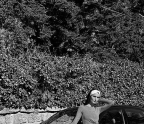
Art for the sake of art—and what better introduction than two leading figures in their respective fields talking about what unites them and what they're passionate about? From his studio in Berlin, artist Olafur Eliasson responds to curator and advisor Javier Molins in a one-on- one that begins with questions about the most recent work of the Icelandic-Danish artist and goes all the way to the deepest meaning of art and culture.
Olafur Eliasson´s year began just like the last one came to a close: with a frenetic pace. He has just closed an exhibition at Palazzo Strozzi in Florence and another one at the Castello de Rivoli in Turin will remain open until the end of March, but in spite of that, his studio is constantly working on new projects. A studio located in Berlin's Mitte district and that, during peak work periods, brings together more than a hundred workers devoted to materializing the ideas of the artist born in Copenhagen in 1967. His work has been characterized by offering immersive experiences long before this expression took over the current artistic scene with a very different meaning.
Eliasson achieved widespread recognition very early in his career. The intervention called Green River helped publicize his work in cities such as Stockholm, Bremen, Los Angeles and Tokyo. This project, carried out in the late nineties, consisted of dyeing these cities' rivers green, a color that is usually associated with health but that in a river can be interpreted as something toxic or polluting. This action was carried out in a completely clandestine and unannounced way with a dye called uranine, a harmless and water-soluble fluorescent dye.






